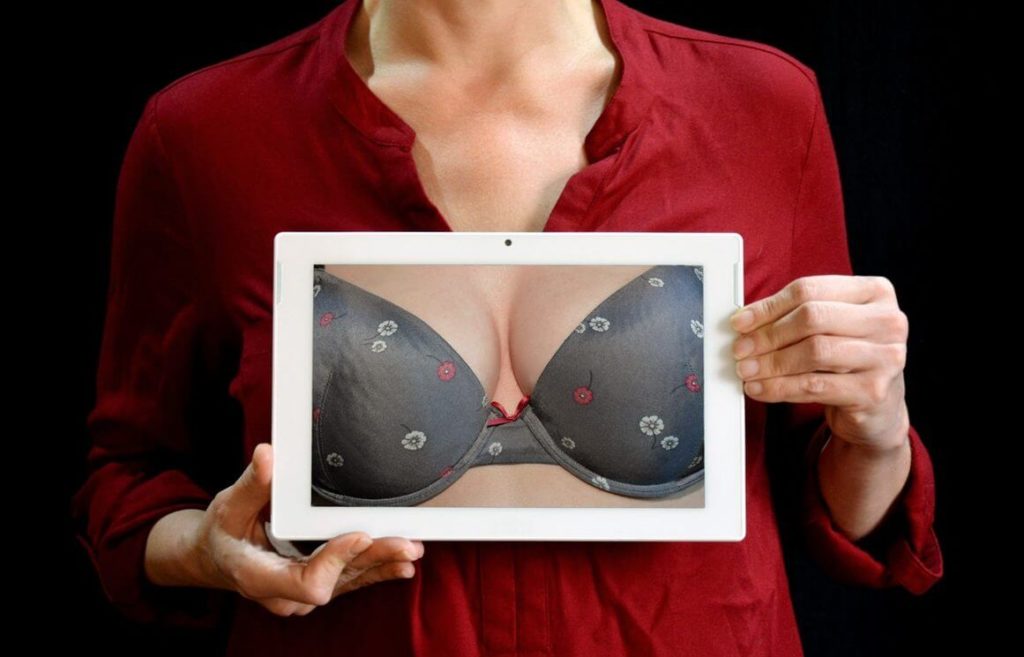Breast pain is a very common symptom that most women will experience at some point in their lifetime. It can affect both or just one breast. Some women will get some discomfort/pain before the start of their period that normally improves once their period starts (cyclical pain). Others, however, may experience pain outside of their normal cycle that may persist (acyclical pain). This, of course, can be worrying for some and you may be referred to a breast clinic for a checkup. Most of the time, however, breast pain is not a cause for concern.
Symptoms
Cyclical breast pain
This type of breast pain normally occurs monthly according to the menstrual cycle. It usually happens just before the period starts and the discomfort can vary from a dull ache, stabbing and burning sensation, to extreme tenderness. The breast may also feel heavy. Usually, the pain improves once the period starts.
Acyclical breast pain
These symptoms occur outside the normal menstrual cycle and are unpredictable. The character of the pain can be quite variable. It ranges from a dull ache, a sharp shooting pain, a sensation of hotness, stinging or burning sensation. It sometimes occurs intermittently but at other times may be constant and worse when pressure is applied. Simple painkillers usually help alleviate symptoms, and in the majority of cases, the symptoms will settle down given time.
Causes of breast pain
1. Hormonal changes
Breast pain is caused by a variety of factors and we think that hormonal fluctuations play an important role. Oestrogen in women’s bodies can increase the sensitivity of breast tissue which in turn causes tenderness. Occasionally pain can also be experienced when starting or changing contraception.
2. Muscle strain
Sometimes pain originating from the underlying chest wall muscle may radiate and mimic breast pain. The breast is positioned on top of the large pectoralis major muscle which if strained may cause pain that can radiate to the breast. Any specific tenderness of the ribs/rib cartilage (costochondritis) may also mimic breast pain.
3. Other causes
Other contributing factors include large breast size, previous surgery, menopausal changes and anxiety/stress.
Treatment for breast pain
Your GP may refer you to a breast clinic for further investigations. If nothing worrisome has been identified then breast pain is treated with simple measures below.
1) Simple pain relief
This is an easy and effective way of treating breast pain. We normally recommend non-steroidal anti-inflammatories for a short period of time e.g. Ibuprofen (topical gel or tablets), that must be taken with food. You need to make sure that you are not asthmatic, have a history of stomach ulcers or kidney problems before taking this. Please check with your GP first regarding how much to take and the duration of treatment.
For some people, simple paracetamol may also suffice.
2) Correct bra fitting
Getting the correct bra for your breast size is a simple way to help alleviate breast pain. This is true especially for women who are generously breasted. Well supported breasts will have less room to move around. This, in turn, can alleviate the discomfort that may be aggravated by movement. So, if you haven’t had a bra fitting recently then it may a good idea to drop into your local lingerie store and get measured up.
3) Evening Primrose Oil or Starflower Oil tablets
Evening primrose oil or starflower oil tablets contain an essential fatty acid called gamolenic acid (GLA). There is little scientific evidence to show that taking GLA alleviates breast pain, nevertheless, anecdotally it does appear to help some women with their breast pain symptoms. It is recommended that you take it for at least 3-4 months in the first instance before you see any benefit, if at all.
It is advised not to take these if you are pregnant, trying to conceive or if you have epilepsy.
4) Lifestyle advice
Some women have found some dietary advice helpful, such as reducing caffeine and alcohol. Ways to relieve stress such as adopting relaxation techniques or meditating have also been helpful for many women.
Conclusion
Breast pain can be a nuisance for some and quite debilitating for others. The majority of the time, however, symptoms of breast pain without the presence of any lumps are not worrisome. It usually self-limits and can be helped by the measures described above. Nevertheless, it is always important to be breast aware and any new breast symptoms must be checked by a qualified doctor.


